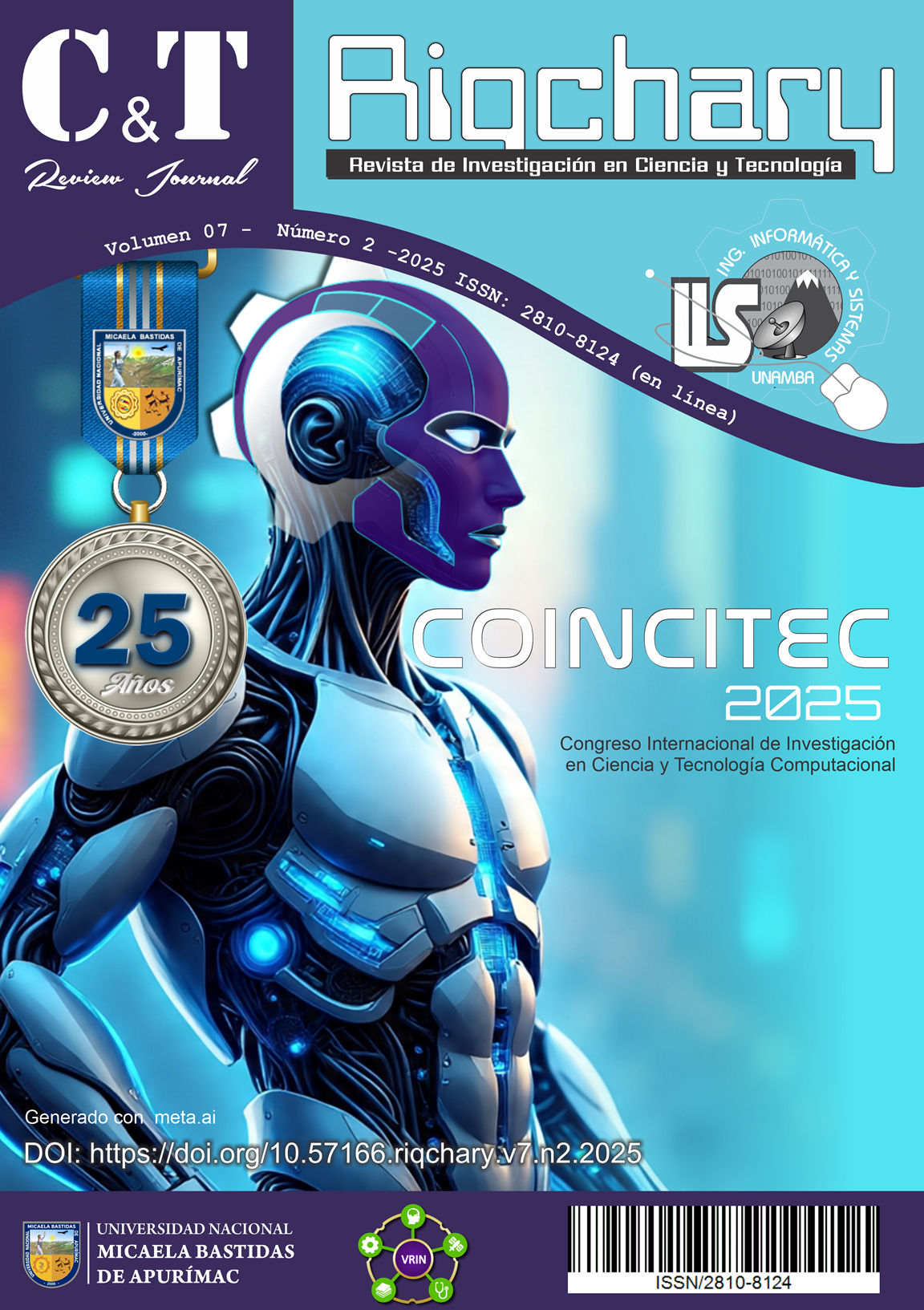Evaluation of the corrosive nature of water and its impact on an industrial cooling system
Main Article Content
Abstract
Water quality is a critical factor for the efficiency and lifespan of industrial cooling systems, potentially leading to operational failures. The objective of this study was to evaluate the quality of the feedwater to the closed cooling system at Briquetera del Caroní (BRIQCAR), given the observation of deterioration and increased leaks. The descriptive study determined the physicochemical parameters of the feedwater, calculated the Langelier Saturation Index (LSI), and analyzed the pH and LSI trends over the period 2010–2025 using linear regression. The results revealed a statistically significant downward trend in the pH, total alkalinity, and calcium hardness of the water over the years. pH values shifted from alkaline to consistently acidic (<5.5). The calculated LSI was negative, accentuating an increasing corrosive tendency. Correlation matrix analysis confirms that the decrease in pH, total alkalinity, and calcium hardness are directly interrelated with the decrease in pH, which is the driving force behind the increase in corrosive potential. It is concluded that feedwater quality has evolved toward greater chemical aggressiveness, contributing to equipment deterioration and increased leaks. Continuous monitoring and the implementation of a corrective chemical treatment program are recommended to stabilize the LSI, protecting the infrastructure, and optimizing operational efficiency.
Article Details

This work is licensed under a Creative Commons Attribution-NonCommercial-NoDerivatives 4.0 International License.
When an author creates an article and publishes it in a journal, the copyright passes to the journal as part of the publishing agreement. Therefore, the journal becomes the owner of the rights to reproduce, distribute and sell the article. The author retains some rights, such as the right to be recognized as the creator of the article and the right to use the article for his or her own scholarly or research purposes, unless otherwise agreed in the publication agreement.
How to Cite
References
Gaceta Oficial 38.595, «Ley de Aguas: Asamblea Nacional,» 02 Enero 2007. [En línea]. Available: https://www.asambleanacional.gob.ve/storage/documentos/leyes/ley-de-agu-20220208194620.pdf. [Último acceso: 02 Febrero 2025].
V. Mora Arellano y J. L. Cedeño, «Valuación de corrosión e incrustaciones en instalaciones hidráulicas de una planta de potabilización en el estado Bolívar, Venezuela,» 2006. [En línea]. Available: https://ve.scielo.org/scielo.php?script=sci_arttext&pid=S1690-46482006000100008. [Último acceso: 30 Agosto 2025].
C. De Sousa, A. Correia y M. C. Colmenares, «Corrosión e incrustaciones en los sistemas de distribución de agua potable: Revisión de las estrategias de control,» 2010. [En línea]. Available: https://ve.scielo.org/scielo.php?script=sci_arttext&pid=S1690-46482010000200003. [Último acceso: 30 Agosto 2025].
A. Awatif, K. Basim y A. Sura, «Evaluating Water Stability Indices from Water Treatment Plants in Baghdad City,» Journal of Water Resource and Protection, vol. VI, nº 14, pp. 1344-1351, 2014. https://doi.org/10.4236/jwarp.2014.614124
evapco, «Closed circuit cooler. Instrucciones de operaciones de mantenimiento,» EVAPCO ,Inc, Westminter, USA.
J. F. Rios, J. A. Calderón, F. Echeverría y G. Peñuela, «Diseño de un sistema piloto para el estudio de la corrosión del material de tubería y su contribución en el dete-rioro de la calidad del agua potable,» Revista Facultad de Ingeniería Universidad de Antioquia, nº 43, pp. 102-113, 2008.
Hanna Instruments, «Equilibrio del agua. Índice de Langelier,» 2025. [En línea]. Available: https://www.hannainst.es/blog/790/equilibrio-del-agua-indice-de-langelier. [Último acceso: 05 Enero 2025].
Carbotecnia, «La tendencia incrustante, corrosiva o equilibrada de un agua, y el Índice de saturación de Langelier,» 20 Junio 2024. [En línea]. Available: https://www.carbotecnia.info/aprendizaje/quimica-del-agua/como-se-calcula-el-indice-de-langelier/. [Último acceso: 06 Diciembre 2024].
UPEL, Manual de Trabajos de Grado de Especialización y Maestría y Tesis Doctorales, Quinta ed., Caracas: FEDUPEL, 2016.
COVENIN 2614, «Agua Potable. Toma de muestra,» FONDONORMA, Caracas, 1994.
COVENIN 2709, «Aguas naturales, industriales y residuales. Guia para las ténicas de muestreo,» Fondonorma, Caracas, 2024.
Práctica Operativa POP10LE01, «pHmetro Metroohm, 781,» Gerencia de Mante-nimiento, Puerto Ordaz, 2009.
COVENIN 2462, «Aguas naturales, industriales y residuales : Determinación del pH,» FONFONORMA, Caracas, 2002.
D. Skoog, D. West, F. Holler y S. Crouch, Fundamentos de química analítica, Novena ed., México, D.F.: Cengage Learning Editores, S.A. de C.V., 2015.
D. Harris, Análisis Químico Cuantitativo, Tercera ed., Barcelona: REVERTÉ, 2016.
COVENIN 2188, «Agua potable. Determinación de alcalinidad,» FONDO-NORMA, Caracas, 1984.
COVENIN 2408-86, «Agua- Determinación de Dureza Total y Calcio. Método volumetrico. Dterminación de Magnesio por cálculo,» FONDONORMA, Cara-cas, 1986.
COVENIN 2461, «Agua natural, industrial y residual, Determinación de solidos,» FONDONORMA, Caracas, 1987.
J. N. Miller y J. C. Miller, Estadística y Quimiometría para Química Analítica, Cuarta ed., Madrid: Pearson Educación S.A., 2002.
J. D. Hernández Lalinde, F. Espinosa Castro, J. E. Rodríguez, J. G. Chacón Rangel, C. A. Toloza Sierra, M. K. Arenas Torrado, S. M. Carrillo Sierra y V. J. Bermúdez Pi-rela, «Sobre el uso adecuado del coeficiente de correlación de Pearson: definición, propiedades y suposiciones,» Archivos Venezolanos de Farmacología y Terapéu-tica, vol. XXXVII, nº 5, pp. 587-601, 2018.
A. D. Pauta y D. A. Quezada, «Determinación de la tendencia corrosiva e incrus-tante del agua potable distribuida en la ciudad de Azogues,» Cuenca, Ecuador, 2017.
Ministerio de Sanidad y Asistencia Social, «Normas Sanitarias de calidad del agua portable,» Caracas, 1998.
Water Technologies, «Capítulo 24 - Control de la corrosión - Sistemas de refrigera-ción,» 2025. [En línea]. Available: https://www.watertechnologies.com/handbook/chapter-24-corrosion-control-cooling-systems. [Último acceso: 05 Junio 2025].





